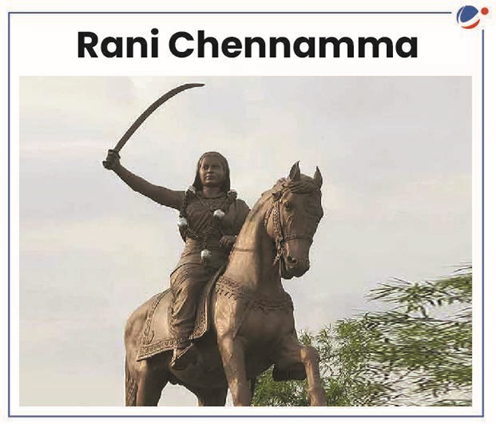Why in the News?
Recently, 200th anniversary of the Kittur or Kitturu Revolt, led by Rani Chennamma, was commemorated.
About Rani Chennamma
- She was born in 1778 at Kakati village in present day Karnataka.
- She married Raja Mallasarja of Kittur, who ruled the province until 1816.
- After Mallasarja’s death in 1816, his eldest son, Shivalingarudra Sarja, ascended the throne, but he died soon.
- After this, she adopted a child, Shivalingappa, and made him heir to the throne.

Clash with the British East India Company (EIC)
- British East India Company did not accept her adopted son as legal heir as per the Doctrine of Lapse and ordered her to exile her adopted son.
- It was the first instance of imposition Doctrine of Lapse in 1824 (refer to box), even before officially articulated by Lord Dalhousie.
- She then defied EIC’s order to exile adopted child and sent letter against the order to Lord Elphinstone, the then Lieutenant-Governor of Bombay, to plead the cause of Kittur, but her request was turned down.
- The British tried to confiscate the treasures and jewels; this led to the Kittur Revolt.

About Kittur Revolt (1824)
- It is regarded as the first Indian armed rebellion against British EIC. Also, one of the earliest woman-led anti-colonial struggles.
- In the first battle, in October 1824, British forces lost heavily.
- Also, British officers were taken as hostages by her.
- She released them after a promise from the British that the war would end.
- But the British cheated her and re-started the war.
- The British army attacked the Kittur Fort and captured it. She and her family were imprisoned and jailed at the fort in Bailhongal, where she died in 1829.
- Her lieutenant, Sangolli Rayanna played key role.
Doctrine of Lapse
|
Conclusion
Rani Chennamma revolt against was just not against the East India Company but also against the society in which women were discriminated. Her revolt and sacrifice had played key role in national awakening during freedom struggle.



